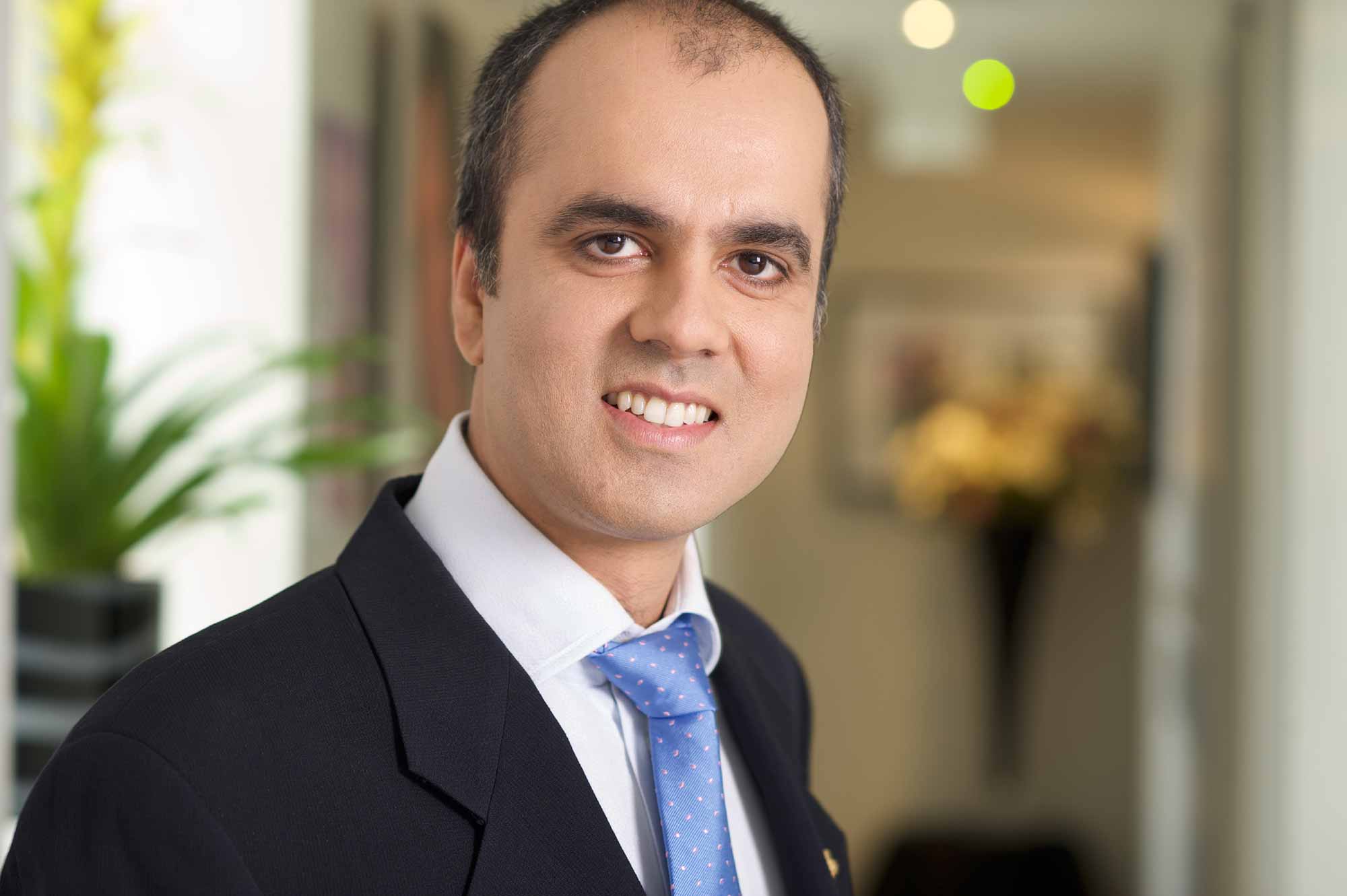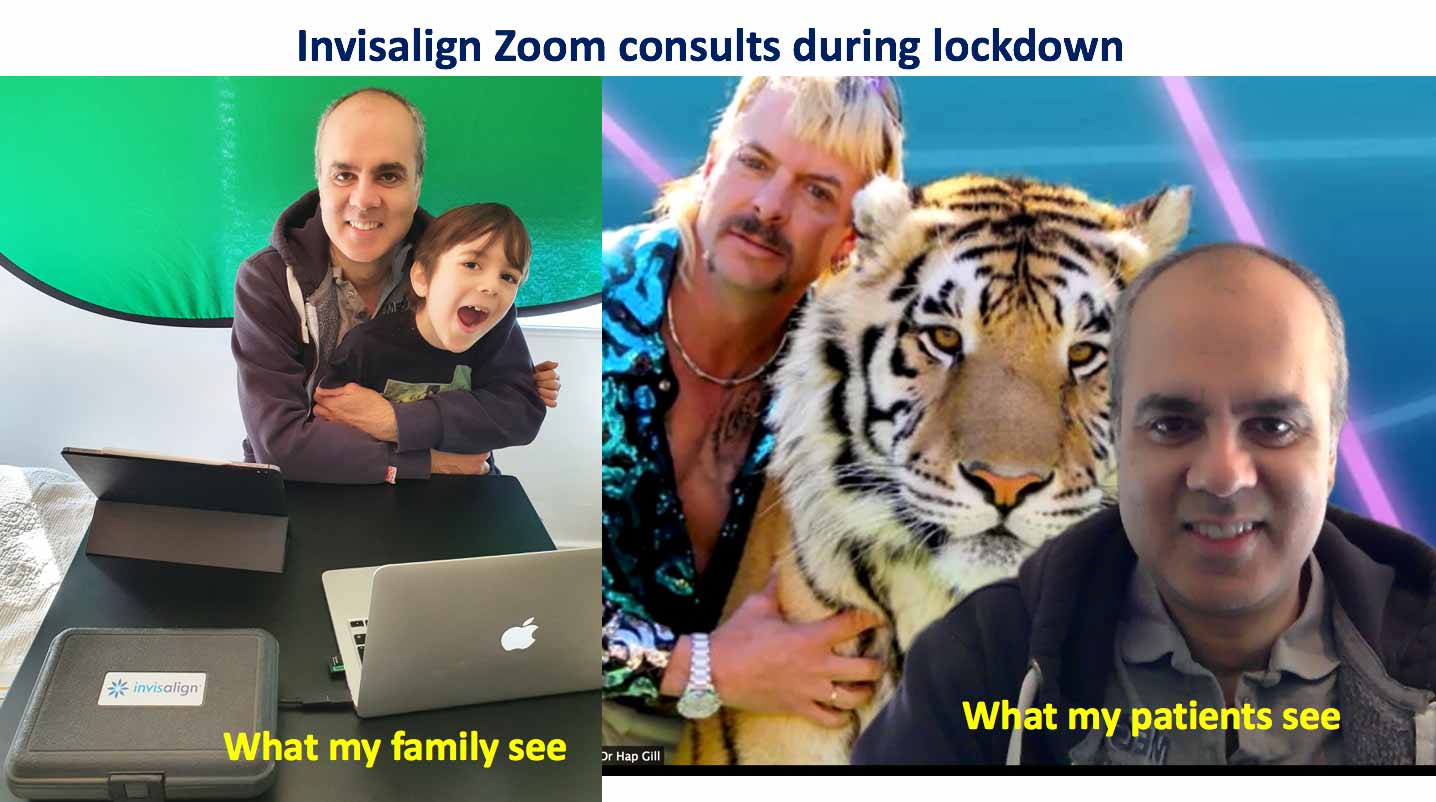 Hap Gill, the owner of The Richmond Dentist, continued marketing throughout lockdown and has continued to attract new patients. Here he talks to Richard Scarborough about how he adapted his marketing, his experience of virtual consultations and plans for reopening.
Hap Gill, the owner of The Richmond Dentist, continued marketing throughout lockdown and has continued to attract new patients. Here he talks to Richard Scarborough about how he adapted his marketing, his experience of virtual consultations and plans for reopening.
What was your initial reaction and priorities immediately after lockdown?
Hap: I went through various phases, shock and denial, etc like most people. But after two days we very quickly did cashflow forecasts and looked at our financial stability; that’s one of the critical things you need to do straight away.
You need to know your money coming in and going out; when you may run out of cash! Then it’s just a question of organising yourself and figuring out a way of maintaining contact with patients and acquiring new patients.
I found the Practice Plan Group COVID-19 Resource Centre very helpful. The cashflow spreadsheet on there is very simple and worked everything out.
I have to say that the Resource Centre is one of the best, if not the best, single-page summary of what’s going on right now.
One of the things that can happen during times like this is that you can feel overwhelmed with all the information out there. I’m very selective about where I get my information. I don’t watch the news any more, have not done so for years. I only allow myself 10 minutes a day to get my information. The Resource Centre is one of the places I now go to as part of those 10 minutes.
What has practice life been like for you during the lockdown?
Hap: It’s been challenging, focused, and productive. I’ve been busy seeing patients virtually and also planning for reopening. I have also done a number of radio interviews on the patients’ plight.
I’ve been using Dental Monitoring. This is essentially a remote way of using artificial intelligence (AI) to assess a patient and monitor them virtually. And it’s really exploded. We’re seeing three to four new patients a day and they’re all keen to start treatment.
The first person I ‘saw’ using Dental Monitoring has now repatriated back to Australia. She is still able to send photos from there. Of course, I am now liaising with her dentist over there as well. But it has been incredible. This crisis has at least provided us with a great opportunity to try new things out.
I’m also using Smilemate. This is a very simple AI software, which allows patients to upload their photos and then produces a report covering health and aesthetics.
I had someone who had a problem with their wisdom tooth. I got her to open and close her mouth, and swallow and feel for lumps so I could prescribe her antibiotics. Then I had someone who broke her tooth. So I went through how to use a DIY kit to fix it.
If you can’t be in the same room with patients and physically treat them, at least you can still see and advise them. Patients are really appreciative about it.
Forty new patients have signed up for Invisalign during this period. So we’re going to be busy when we return to the practice.
It’s great that you are seeing so many new patient enquiries, what has been your approach to marketing during lockdown?
Hap: A lot of people say it’s the wrong time to market things like Invisalign. But I disagree – as long as you get the tone of your communication right. That’s really key. Marketing doesn’t, and shouldn’t stop. But you can’t ignore what’s going on at the moment.
For example, on Instagram, we’re not putting out messages about teeth whitening and straightening, and appealing to the Love Island aspiration. The message needs to acknowledge the global crisis.
Under normal circumstances we would share before and after photos of patients’ smiles. However, that’s not appropriate right now, so instead we share, for example, a before picture of our shelves stocked with PPE. And then an after picture of the shelves empty because we donated it to our local hospitals.
I have done silly photos of me doing video calls with patients and sharing what my patients see – which is me smart from the waist up – and what my family see – which is me not so smart from the waist down. I took a photo of my five and eight-year-old holding up our practice values. It shows they still hold true during lockdown. So, personal photos, showing the other side of me.

We have advertising campaigns on social media and Google. The message is now along the lines of: ‘Straightening your teeth might be the last thing on your mind right now’. Or ‘If you’re bored or curious while working from home, we’re around’. And there are a lot of people who are curious right now.
All of this is about communicating that we’re still around and we’re acknowledging what’s going on. The key is to maintain contact with existing patients and new patients. I think it’s really important to get your name out there. So that when things return to normal, it’s your name that’s on people’s minds.
What other ways are you communicating with your patients, and your team?
Hap: I was sending a newsletter to my patients once a month, but I increased that to every week. Patients want reassurance and confidence that we will have a safe environment when they go back. And it’s similar for the team as well; they want reassurance and to feel confident that they will have a job and that we will be busy and safe.
My philosophy that I am communicating to patients is that when you come to my dental practice, it’s going to be the cleanest place you will be that day – including your own home.
I’m putting together a plan for coming back to work, and communicating that to patients and the team.
What is your plan for reopening?
Hap: Zoom, Dental Monitoring, Smilemate will all become part of the new practice. Virtual consultations are still important, even after we are seeing patients in the practice again. With virtual consultations, I now have another consultation room, and it did not cost me a penny.
With cross-infection control you assume that everyone is infected, and put systems in place to reflect that. We want to do everything in our power to make sure there’s no risk. We are after all, still in a pandemic.
We’ve invested in air purifiers and we will use fogging machines with hydrochloric acid. We’ll walk around the practice a few times a day with that.
And we’re going to tell patients that we’re doing all of this to keep everyone safe.
The patient journey will start before they come into practice. As indeed it does normally. But now it will begin with a phone call or email about whether they’re tested for the coronavirus antigen or antibody, and asked about symptoms. Amongst many other things!
We also need to prepare them for the fact that they will need to behave differently when they come in. We’re also going to behave and look different. But, still the same lovable people underneath all of that PPE! The practice will also look different, reception will be bare as will the surgery.
For example, there might not be anyone at the front desk. We won’t offer refreshments. Patients will have to have their temperature taken, wear a mask and come alone. We will have a closed door policy.
That is the process while the virus is around. But I don’t anticipate that being the case in six months to a year’s time. I think it is a phased approach to returning to normality. The first phase is non-aerosol generating procedures (AGP). Then we will phase back to AGPs when the regulators allow us.
The important thing is to communicate to patients and the team that things are different.
What are your thoughts about the long-term future?
Hap: It’s going to be different for quite a while. But I’m very positive. Lots of opportunities. Every time I send a newsletter to my patients, I get lots of messages back of support. And every now and then I get a message or email, and even some guitar-playing from a patient…that just makes my day.
My positivity comes from my team. They are amazing as are my patients. The messages we’re receiving from them shows they love us and still want to see us.
Richard: Thanks for sharing your experience Hap. Despite everything happening, it all sounds very positive.
If you’re interested in learning how Medenta can help you to improve your patient experience, give us a call on 01691 684175, or visit www.medenta.com.


